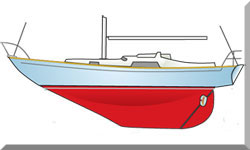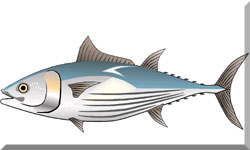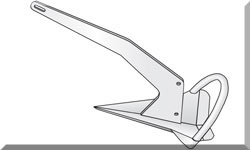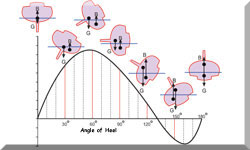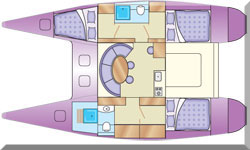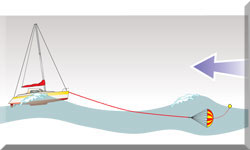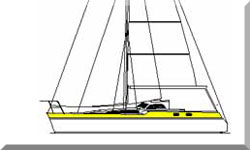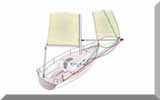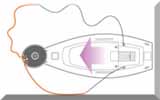- Home
- Hinckley Sailboats
Discovering Hinckley Sailboats: Artistry on the Water
For many discerning sailors, the name Hinckley immediately conjures visions of gleaming brightwork, classic lines, and an almost tangible sense of quality. These aren't just boats; they're often considered maritime works of art, each one a meticulously crafted vessel that seamlessly blends traditional aesthetics with cutting-edge engineering.
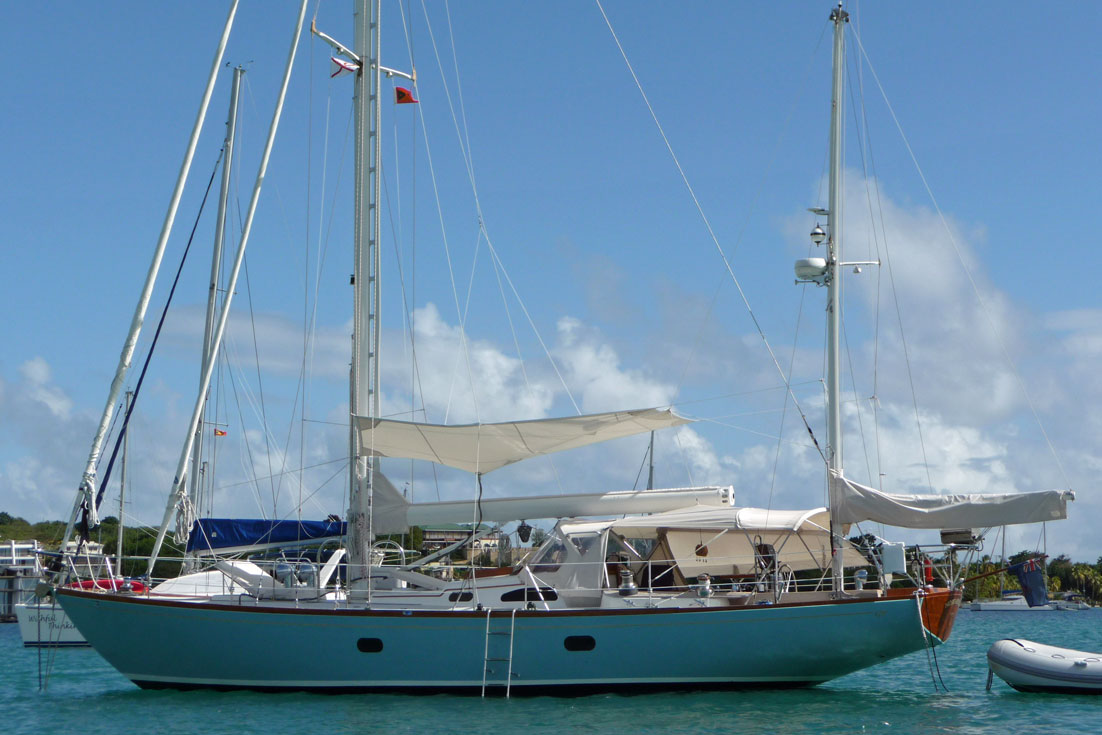 Hinckley 48
Hinckley 48While in recent decades Hinckley has become synonymous with elegant powerboats, the company's rich past is firmly anchored in the world of sail, having produced some of the most revered Hinckley sailboats ever to grace the water.
From Maine Roots: Hinckley's Enduring Journey
The Hinckley Company's story began quietly in 1928, when Henry R. Hinckley set up shop in Southwest Harbor, Maine. Initially, his Manset Boatyard focused on servicing local lobster boats and the sleek yachts of summer residents. But Henry, a man clearly driven by a deeper vision, soon stretched his ambitions far beyond mere repairs. In 1933, he launched his first build, the 36-foot fisherman Ruthyeolyn. Even then, her graceful contours hinted at the distinctive craftsmanship to come, a future for what would become truly special Hinckley sailboats. Right from the start, Henry's commitment to the highest standards was palpable; he'd often design and fabricate custom hardware himself when off-the-shelf parts simply weren't good enough for his exacting vision. This early dedication to detail would become a defining characteristic of the Hinckley brand, ultimately forging a global reputation for distinctive yachts.
The company's journey through the decades brought significant evolution. Take 1959, for example. Hinckley became an early adopter of fiberglass construction for their boats, a material many in the industry viewed with skepticism at the time. This wasn't just a practical decision; it showcased their willingness to embrace new technologies without ever wavering from their core philosophy of building superior vessels. For many years, Hinckley sailboats truly dominated their business. Yet, a pivotal moment arrived in 1994 with the introduction of the jet-powered Picnic Boat. This elegant powerboat catapulted Hinckley further into that market, shifting the balance. Despite this change, the heart of Hinckley's boat building philosophy remains profoundly unchanged: an unwavering pursuit of quality, innovation, and timeless design. They continue to craft semi-custom vessels that artfully blend modern performance with classic sensibility. Today, Hinckley still produces yachts and operates several service yards along the East Coast, with authorized service locations also found on the West Coast and Great Lakes, catering to both power and Hinckley sailboats.
Signature Style: Design & Innovation in Hinckley Sailboats
A Hinckley sailboat's design philosophy is a captivating blend of classic elegance and ingenious function. Over the years, the company has partnered with celebrated naval architects—luminaries like John G. Alden, Sparkman & Stephens, and Bill Tripp, Jr. These collaborations, combined with Hinckley's deep in-house expertise, have resulted in yachts with immediately recognizable features. Spotting a Hinckley often means admiring her graceful sheer lines, meticulously faired hulls, and the beautifully finished brightwork that seems to capture every ray of sunlight, almost glowing from within. Below the waterline, designs have naturally evolved, transitioning from traditional long keels to more efficient fin keels, always aiming for improved performance and handling while never sacrificing that signature Hinckley stability.
These Hinckley sailboats are primarily conceived for comfortable and highly capable cruising, often with a strong emphasis on offshore passages and luxurious liveaboard experiences. While you won't typically see them on the racing circuit, their designs prioritize seaworthiness and ease of handling for discerning owners who value a smooth, confident ride. Innovation has always been a powerful driver. Beyond their early adoption of fiberglass, Hinckley was a pioneer in using the Seemann Composites Resin Infusion Molding Process (SCRIMP) back in 1994. This cutting-edge technique results in a stiffer, stronger, and noticeably lighter hull—a crucial advantage for any luxury sailboat. Today's production models, both sail and power, continue to integrate advanced composite materials like Kevlar, carbon fiber, and epoxy in their hulls. Hinckley even backs this with a lifetime guarantee for the original owner. This deep commitment to advanced materials and techniques underpins their reputation for exceptional durability and prolonged service among cruising sailboats.
Built to Last: The Uncompromising Quality of Hinckley Sailboats
When it comes to construction, Hinckley truly sets itself apart. The primary materials for their hulls and decks have evolved from solid fiberglass to advanced composites like Kevlar, carbon fiber, and epoxy. The company's meticulous use of vacuum infusion, particularly the SCRIMP process, underscores their dedication to creating incredibly strong yet remarkably lightweight structures. This precise process ensures an optimal resin-to-fiber ratio, leading to a consistently high-quality laminate for every Hinckley sailboat.
But what truly defines a Hinckley build is the almost obsessive attention to detail—a level of craftsmanship often compared to creating a fine piece of bespoke furniture. It's frequently remarked that Hinckley essentially builds a wooden boat inside a fiberglass hull, and indeed, their interiors are legendary for their exquisite joinery and the complete absence of any visible raw fiberglass. This painstaking approach extends to every single component, from custom-fabricated stainless steel hardware that gleams under the lightest touch, to the seamless integration of complex systems. The result? A Hinckley sailboat that not only boasts breathtaking beauty but is also meticulously built to withstand the rigors of the marine environment for decades. Hinckley even takes the extra step of curing epoxy hulls in large ovens at 180 degrees Fahrenheit for 24 hours, further enhancing stiffness, strength, and lightness, thereby setting an incredibly high bar for all luxury sailboats.
Notable Hinckley Sailboats: From Classic to Modern Cruisers
Hinckley's sailboat lineage features a number of truly iconic models, each playing a role in cementing the brand's distinguished position. While early models laid the groundwork for the builder's reputation, it was vessels like the Bermuda 40 that truly solidified Hinckley's place in sailing history. This specific Hinckley sailboat, designed by William Tripp Jr. and first launched in 1960, quickly became a gold standard for quality cruising yachts. She was celebrated for her robust construction, comfortable accommodations, and capable offshore performance. While her full keel design might not offer the same upwind prowess as more contemporary fin-keeled boats, her exceptional seaworthiness and rock-solid stability remain highly regarded among aficionados of classic sailboats.
Among the specific Hinckley sailboats worth highlighting are the Hinckley 48 and the Hinckley Sou'wester 42. The Hinckley 48, constructed between 1965 and 1975, was a powerful William H. Tripp design featuring a masthead sloop rig. With a reported sail area exceeding 1,000 square feet and a displacement of 36,000 lbs, she was clearly a substantial vessel intended for serious cruising.
The Hinckley Sou'wester 42, designed by McCurdy & Rhodes and first built in 1982, represents a later evolution in Hinckley sailboats designs. This fiberglass cruising keelboat, also with a masthead sloop rig, offered a more contemporary underbody, complete with a fin keel (or an optional shoal draft keel) and a skeg-mounted rudder. Both the Sou'wester 42 and her slightly larger sibling, the 43, were known for their remarkably spacious interiors, comfortably accommodating up to seven people, featuring a U-shaped galley, and a dedicated navigation station. These designs were also amenable to custom builds, allowing for considerable variation in features and configurations. Later Sou'westers, particularly models like the Sou'wester 59, were specifically crafted for serious bluewater cruising, boasting features like Kevlar and carbon fiber composite hulls and clever keel-centerboard designs for versatile performance, truly earning their place as exceptional cruising sailboats.
Overall, the designs of Hinckley sailboats generally evolved towards increased interior volume and improved sailing performance over time, all while steadfastly upholding their core values of quality and seaworthiness.
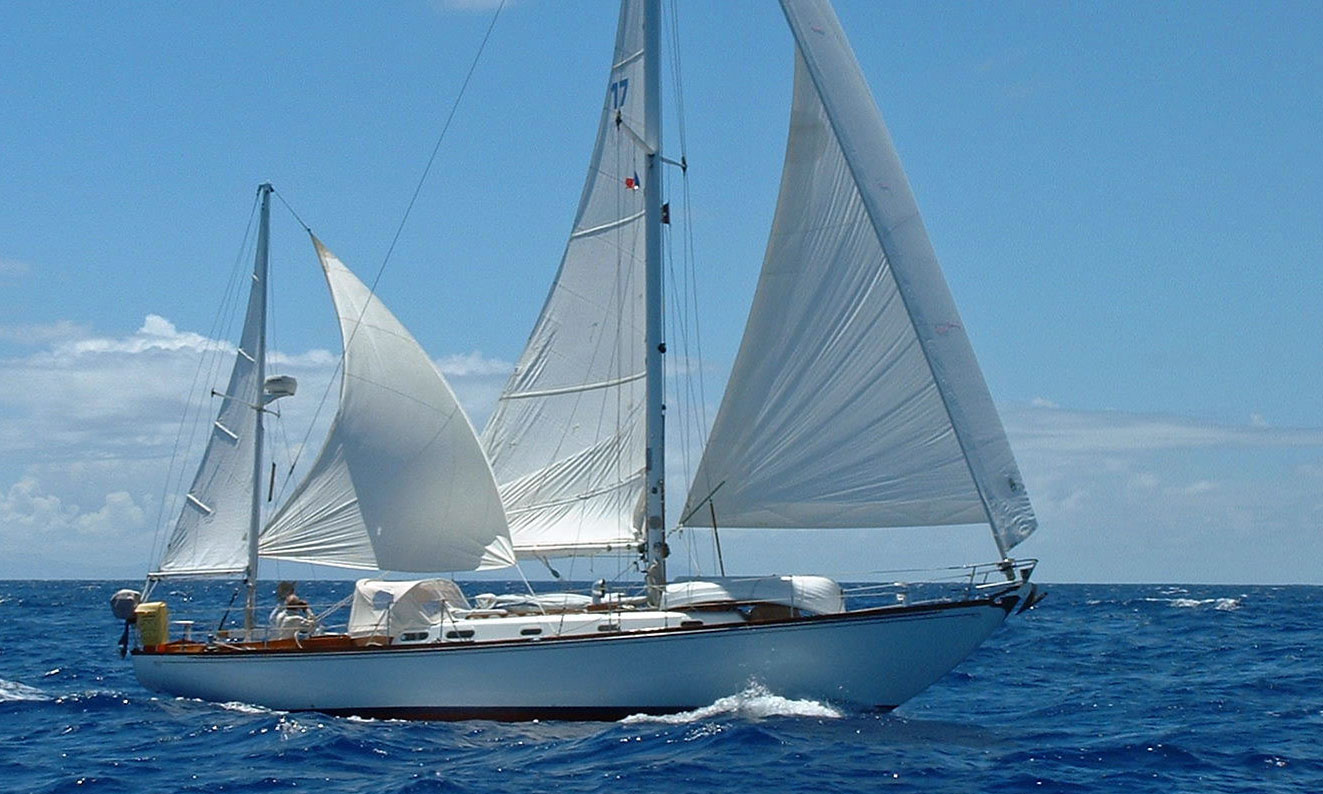 Hinckley Bermuda 40
Hinckley Bermuda 40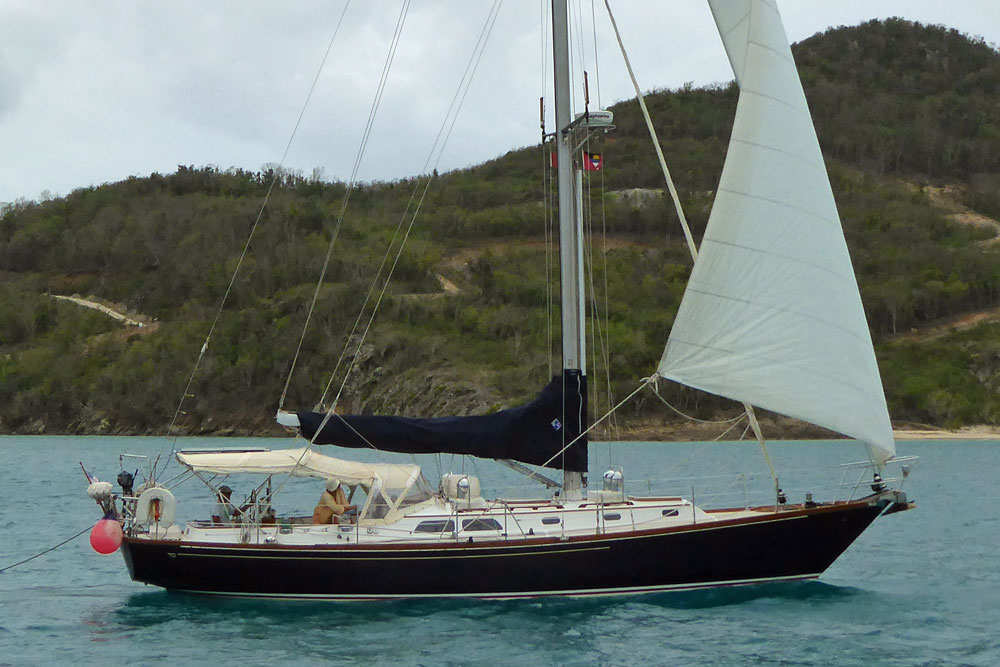 Hinckley Souwester 42/43
Hinckley Souwester 42/43Under Sail: Performance & Comfort of Hinckley Sailboats
When sailing a Hinckley sailboat, you'll find they are almost universally lauded for their stable and stiff sailing characteristics. They track beautifully, inspiring a deep sense of confidence even when the sea turns rough. What's more, they are generally considered easy for a small crew to handle, especially considering their substantial size. Their robust construction and well-balanced rigs contribute to an exceptionally smooth, comfortable motion offshore, making them outstanding choices for extended passages and bluewater cruising. Features like deep bilges, ample storage, and well-protected cockpits further enhance their offshore capabilities. While not built for competitive racing in the modern sense, their inherent stability and predictable handling make them remarkably capable performers across a wide range of conditions, a testament to thoughtful Hinckley design.
Step inside a Hinckley sailboat, and you'll find an interior aesthetic synonymous with classic luxury and superb craftsmanship. Gleaming varnished cherry or teak joinery is a consistent hallmark, creating warm, inviting spaces that feel more like a bespoke home than a boat cabin. The layout philosophy consistently prioritizes comfort and liveability, with thoughtful utilization of every inch of space. Cabins are typically well-appointed and private, galleys are designed for practicality at sea, and heads often include proper showers—a welcome luxury on any voyage. Ergonomics are meticulously considered, with numerous handholds and clever storage solutions integrated throughout the vessel. Even in earlier models, the interiors were remarkably spacious for their time, often rivaling those found on much larger wooden boats. Modern Hinckley interiors proudly continue this tradition, offering light, airy living areas where attention to detail is evident in every surface and fixture, truly defining what a luxury sailboat can be.
Owning a Hinckley: What to Expect
Hinckley sailboats typically appeal to experienced sailors and yacht owners who truly appreciate superlative craftsmanship, timeless design, and a premium cruising experience. The brand enjoys an almost unparalleled reputation within the sailing community, widely associated with uncompromising quality, elegant design, and exceptional resale value. Indeed, Hinckley sailboats tend to hold their value remarkably well on the used market, a clear testament to their robust quality and desirability. An active and passionate owner's association also thrives, fostering a strong community among Hinckley enthusiasts.
Hinckley's lasting contribution to yachting is undoubtedly its unwavering commitment to building yachts of exceptional quality and beauty. They've consistently pushed the boundaries of marine innovation, from being early adopters of fiberglass to pioneering composite construction techniques, all while steadfastly upholding traditional craftsmanship. This dedication is precisely why Hinckley sailboats remain so sought after.
While the reputation of Hinckley sailboats is overwhelmingly positive, prospective buyers should still consider a few practical aspects. The cost of ownership for a Hinckley—both the initial purchase and ongoing maintenance—is significant. This is a direct reflection of the high-quality materials and bespoke craftsmanship involved. While some might argue that other builders offer comparable quality for less, such sentiments often stem from a misunderstanding of the unique value proposition a Hinckley truly offers. Furthermore, older models, though built to last, will require diligent maintenance to preserve their pristine condition, especially the extensive brightwork. The marine industry's broader labor shortage is also a challenge Hinckley has actively addressed, even offering initiatives like student loan assistance programs to attract skilled tradespeople to build and maintain these magnificent vessels.
Ultimately, a Hinckley sailboat is far more than just a vessel; it's an investment in a piece of maritime heritage, a testament to quality, and a direct ticket to a truly exceptional sailing experience. Whether you're drawn to the classic lines of a Bermuda 40 or the more contemporary yet equally refined Sou'wester, owning a Hinckley means becoming part of a proud tradition of discerning sailors who truly understand that some things are simply built better.
Resources & References
- Hinckley Yachts: History
- Hinckley Yachts: Cheers to 30!
- Hinckley Yachts: Find a Location
- Soundings Online: Rapid Evolution
- Channel R: Hinckley Yachts
- YouTube: A Day with Hinckley Yachts | Building Construction & Fine Woodworking
- SailboatData.com: Hinckley 48
- Wikipedia: Sou'wester 42/43
- Engineering.com: Hinckley Yachts Takes Solid Edge to Sea
- Cruising World: 2001 Hinckley Sou'wester 59CC
- Yachting Magazine: Hinckley Picnic Boat 40 Reviewed
- Hinckley Yachts: Gavin McClintock, CEO
- Practical Sailor: Hinckley Bermuda 40
- GlobeNewswire: Hinckley Faces The Great Resignation Head On
Recent Articles
-
Ohlson 38 Guide: Specs, Performance Analysis & Cruising Review
Jan 07, 26 05:52 AM
Discover the Ohlson 38 sailboat. An in-depth look at its Einar Ohlson design, Tyler GRP construction, performance ratios, and why it remains a top choice for offshore sailors. -
Passoa 47 Sailboat Review: Comprehensive Specs & Performance Analysis
Jan 04, 26 04:57 AM
Discover the Passoa 47, a legendary aluminium blue water cruiser by Garcia. Explore technical specifications, design ratios, and why its lifting keel is a game-changer for offshore sailors. -
Sailboat Wheel Steering Maintenance & Inspection Checklist
Dec 30, 25 02:32 PM
Keep your vessel’s helm responsive and reliable with our expert maintenance checklist. Master cable tensioning and system inspections to avoid mid-passage failures.


